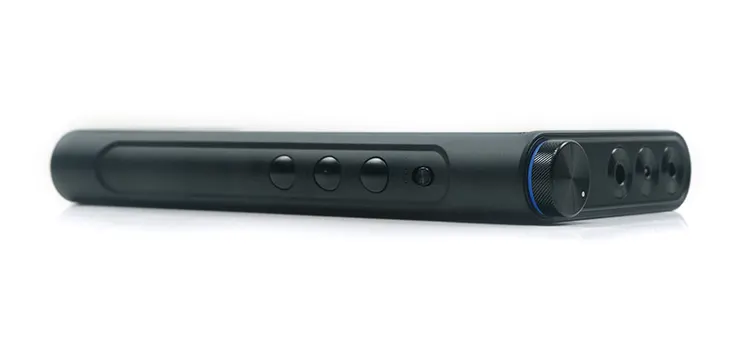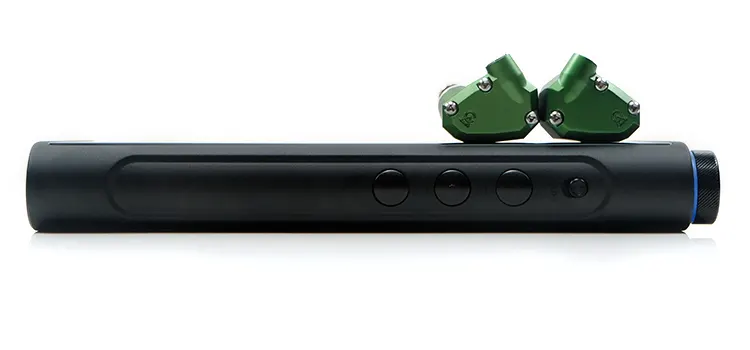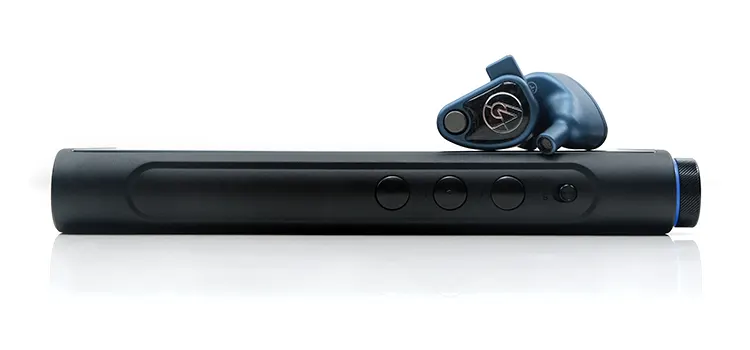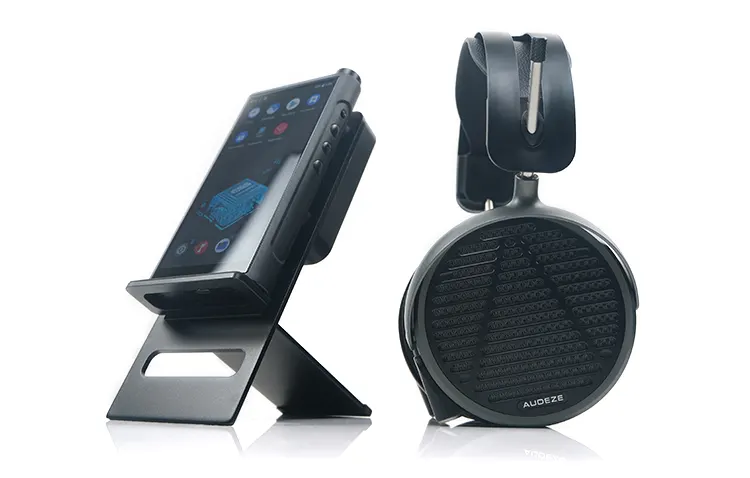Sound Impressions
Summary
I found M15S sound signature with our paired IEMs to be quite different, and perhaps in a good way unless you love an energetic upper mids and treble tone.
This is not a THX amplifier nor does it have the same level of power or resolving capability as the M17. However, the tonal balance might actually win some fans over. Those might be the same fans that may have hesitated at the clean but aggressive sound signature of the flagship or found the older M15 sound perhaps too neutral on the lows.
The M15S delivers a smoother and weightier performance compared to the original. It is more refined on the highs, offering better vocal note saturation and a stronger bass fundamental on its low-end notes.
In its own right, the M15S delivers a natural-to-neutral tonal quality but there is less treble emphasis than before. It is not as warm sounding or with the same level of mid-to-upper bass bloom as the HiBy RS6 nor does it possess the sweetened tone of the lower-end N3Pro tube mode or the equivalent from the flagship Cayin N8ii.
However, it does sound fuller and richer in its timbral qualities than the iBasso DX240 side-by-side comparison using AMP1 MKIII and creates a blacker background compared to the original M15.
The M15S pairs really well with neutral monitors but also digs out an improved level of sub-bass rumble from dynamic driver hybrids over the original. The older M15 has this slight mids to treble bias and is more neutral on the lows. If you are a 64 Audio U4s owner, the new over the old is the better choice for bass weight.
Also, the M15S second harmonic distortion control mutes sibilance flares very nicely with headphone combinations, something which the original M15 does not offer.
Timbre
For me personally, this is the most pleasing aspect of the M15S sound signature. Compared to the original, the weight and meat on the notes are much more satisfying with our tested gear.
Not just IEMs but headphones also in desktop mode with the likes of the OG Solaris sound far less dull and shallow on the M15S balanced output compared to the original M15 performance.
I think both retain their punch to the same level but it’s more the underlying weight and additional warmth to the tone that makes a qualitative difference to the listening experience.
Combine that with a treble that seems to have been dialed back a bit, particularly in the lower treble, leaves previously feistier M15 combos such as the Empire Ear’s Odin or the highs of the OG Andromeda sounding much smoother and more refined to my ear on the M15S.
I would encourage headphone users to turn on the second harmonic order option in the audio settings to further wet the leading edges of higher pitching notes for both vocal and percussion. Sibilance gets damped down very nicely with this option on neutral or transparent pairings such as the Audeze MM-500 and the HIFIMAN Arya Stealth Magnet Edition.
The Original M15 has no such option and still can sound significantly steelier in the upper mids vocal performance in some recordings compared to the M15S, even without the second harmonic order option turned on.
Staging & Dynamics
Because of the subtle toning down of the upper mids and treble emphasis from the original and combined with the additional weightier tone, the M15S staging improved on the depth and power over the M15 without tested combos.
Your ear or listening attention will be pushed further to the M15S bass and mids performance as a result of a slight reduction in percussion energy and higher pitching vocal presence over the older version.
For bassier monitors, the M15S will be a better choice over the original for power with the likes of the 64 Audio U4s and the bass module at maximum on the JH Audio Contour XO.
You might think the overall presentation is slightly darker but I do find the M15S to be more spacious and precise compared to the older version, particularly through the mids which seem very clear with plenty of air and excellent levels of separation between voice and instrument.
The dynamic range is good, perhaps not to the level of the M17. The M15S doesn’t quite have the same slam and imaging complexity as the flagship but when up against the original M15 that additional power and blacker background add an additional dimension.
Especially for headphone users using desktop mode with that additional power on tap. It brings in a fairly dynamic sound, nothing polite or shallow, with good power for moderately efficient headphones to sound lively with filled-in presentations.
Synergy
Noise
With very sensitive monitors such as the Campfire Audio Andromeda 2020 and the original Solaris, the M15S, like the original M15, still exhibits a very fine level of background noise at very low levels.
However, the amount of hiss is much lower, especially when using it in balanced mode with low gain. However, I would not advise switching up to medium or high gain as the hiss levels get much too high to be enjoyable.
Having said that I cannot see too many IEMs requiring anything more than low gain with the M15s as it has more than enough in the tank to drive them to that level. Headphones are not going to pick up any noise on the higher gain settings.
Like the original M15, the output impedance of the M15S PO is just a shade on the high side as in above 1Ω SE with the balanced output reaching up to 2.3Ω and slightly higher than the M17’s ≤2Ω rating. This shouldn’t present any issues for headphones and the majority of IEMs out there but testing on a case by cases basis won’t do any harm.
From my own testing with an iFi Audio IEMatch 2.5mm TRRS and a JH Audio Contour XO, (all BA setup), I didn’t feel the higher impedance made any noticeable difference to the sound signature of the Contour.
IEM Pairings
Since the M15S is a little more relaxed and smoother in the upper mids and highs compared to the M15, it does a better job matching with brighter IEMs or those with a strong upper-mids bump.
It also does better than the original with IEMs in terms of even harmonic presence and presenting a firmer bass fundamental in lower pitching instruments such as bass guitar or cello string plucks.
Generally, the M15S is going to present better weight and body on IEM pairings compared to the original which rings a bit more neutral on the low-end in comparison.
For example, the OG Andromeda sounded balanced and clear on the original M15 but perhaps a bit more shifted to the mids and highs with a neutral BA bass response.
The M15S injected more comparative weight and smoothness through the lows and mids with better vocal saturation and a blacker background. It also injected a bit more life into the bass response of the OG Solaris, something which I had originally dismissed as a dull pairing with the older M15.
That theme more or less continued and was emphasized with the 64 Audio U4s pairing whose dynamic driver sounded much beefier on the sub-bass presence and rumble compared to the OG M15 pairing as well as a little less pushed in the upper mids and treble.
That improved bottom end also helped with the general perception of improved note body and weights through the mids and yes, the background sounded blacker to my tired ears, especially in the higher frequencies.
Headphone Pairings
Both SE and balanced output power ratings from the M15S are higher than that of the original M15 at up to 1.2W in desktop mode balanced compared to 800mW into a 32Ω load.
If we remain in battery mode for both DAPs, the over-headphone mode of the older M15 at 800W balanced is also just slightly behind the M15S’s best effort at 990mW into the same 32Ω load.
On the battery mode, both DAPs will not differ much for moderately efficient headphones such as the Meze Audio Empyrean or the Rosson Audio Design RAD-0. While not challenging dedicated high-powered desktop amps, they do not sound shallow or compressed either.
Once we shift to desktop mode though the M15S will show some improvement in terms of dynamic range and instrumental separation sounding a little bit deeper and wider over the M15.
The tonal shift observed in our IEM pairings was unchanged. The original M15 creates a slightly cleaner more mids and treble-focused presentation to the likes of the RAD-0 and the M15S introducing a bit more bass body and mids saturation.
One key difference though is the second-order harmonic distortion option on the M15S. That makes a difference in terms of sibilance control and lower-treble sharpness with more revealing headphones.
I found it very noticeable in all headphone pairings with the original M15 emphasizing a lot more natural sibilance and the M15S keeping it much smoother with the 2nd order Level 2 setting.
We had already discussed the difference this makes with the Arya but you can pick up the difference right away with the likes of the Audeze MM-500, Empyrean, and RAD-0 so it’s not just for one specific headphone, it does work with a wide range of headphones.






